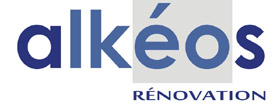In some programs, people have a better chance of winning the longer they remain drug-free. Research suggests the success of MET may depend on the type of substance used. It appears to be more effective for people with alcohol or cannabis addictions. Results are mixed for those using heroin, nicotine, or cocaine or those using multiple substances. Once a person has completed medically managed intensive inpatient treatment, sometimes known as detoxification, or “detox,” it’s often very helpful to temporarily relocate to a monitored sober community within the first year.
Addiction Treatment
For certain drug types, some symptoms are less prominent, and in some cases, not all symptoms apply. For example, withdrawal symptoms are not specified for inhalant use. Now you’ll need to fill that space with healthy and enjoyable pursuits.
Although there’s no cure for drug addiction, treatment options can help you overcome an addiction and stay drug-free. Your treatment depends on the drug used and any related medical or mental health disorders you may have. Just as families have found ways to adapt to an individual’s addictive behavior, they have to find ways to facilitate the healing process and support that person’s healthy behavior. That can require some degree of reorganizing their focus and behavior patterns, restoring mutual trust, repairing ruptured relationships, and learning about substance use and recovery. Overcoming addiction is a developmental process that can benefit from differing types of support at different stages of recovery. A recovery coach or recovery manager typically is knowledgeable about and can help an individual client find and access needed support resources at every step of the way.
In the addiction world, “rehab” typically refers to a residential treatment program that lasts for a minimum of 30 days There are many types of programs in many types of settings. In most, days are structured with individual and group alpha-pyrrolidinopentiophenone function therapy, medication management (if needed), and activities focused on rebuilding general physical and mental health. Some programs offer alternative forms of treatment such as equine therapy, wilderness excursions, acupuncture, yoga, and more. Rehab is not considered full treatment of addiction problems because it does not provide for gaining and practicing recovery skills under the pressures of everyday life.
- Areas of executive function regain capacity for impulse control, self-regulation, and decision-making.
- Horses can help people develop a sense of trust through their interactions with horses.
- • Therapy programs deliver tangible coping skills that help people meet life’s challenges without having to resort to drugs.
- Detox may involve gradually reducing the dose of the drug or temporarily substituting other substances, such as methadone, buprenorphine, or a combination of buprenorphine and naloxone.
Recovery from Addiction
There are companies large and small that have recovery-friendly hiring practices. In addition, there are nonprofit organizations such as American in Recovery and the National HIRE Network that specifically help those with addiction or criminal history to find work. Usually for a substantial fee, career transition services help executive and higher-up employees define career goals and help with job searches. Many treatment programs have partnerships with area businesses to hire those in recovery. And one measure of a comprehensive substance abuse treatment program is the help it offers to enrollees to identify their interests and find and build a meaningful career path. Individuals with experience and expertise may find a route to full employment by first being willing to offer their skills pro bono or as a volunteer to businesses or nonprofit organizations in their field.
Products & Services
Either way, it often keeps people trapped in addictive behaviors. It gets demi lovato age in the way of recovery, self-acceptance, and accessing help when needed. Studies show that craving has a distinct timetable—there is a rise and fall of craving.
One third experienced relapses when they were experiencing negative emotions and urges to drink/use. By contrast, most adolescents relapsed in social settings when they were trying to enhance a positive emotional state. A small group of adolescents relapsed when facing interpersonal difficulties accompanied by negative emotions and social pressures to drink or use. Treatment and education can help adults learn techniques for handling urges and ways of accepting and managing negative emotions. Treatment and information aimed at adolescents can help them learn techniques for managing both positive and negative emotional states. No matter which pathway of recovery a person chooses, a common process of change underlies them all.
In real life, however well-meaning they are, interventions are humiliating and often backfire. Even if they succeed in getting people into treatment, data show that they don’t ensure that people stay in treatment; one major problem is that they nullify the internal motivation need to quit. Data indicate that 85 percent of people who struggle with addiction do not seek help.
Nor does it solve the problem that made use of a psychoactive substance so attractive in the first place. What must follow “detox” is treatment aimed at rebuilding a person and a life. That process can take months or years, and many types of help and supportive resources can be accessed all along the way. Recovery from addiction is not a linear process, quitting cymbalta cold turkey and increasingly, relapse is seen as an opportunity for learning. Studies show that those who detour back to substance use are responding to drug-related cues in their surroundings—perhaps seeing a hypodermic needle or a whiskey bottle or a person or a place where they once obtained or used drugs. Such triggers are especially potent in the first 90 days of recovery, when most relapse occurs, before the brain has had time to relearn to respond to other rewards and rewire itself to do so.
